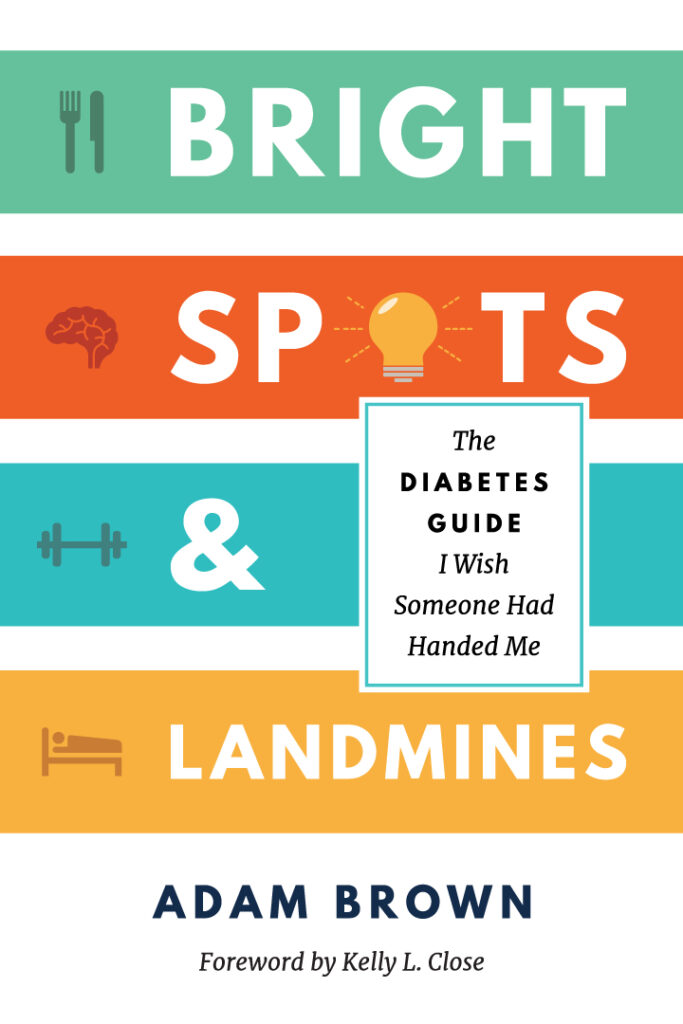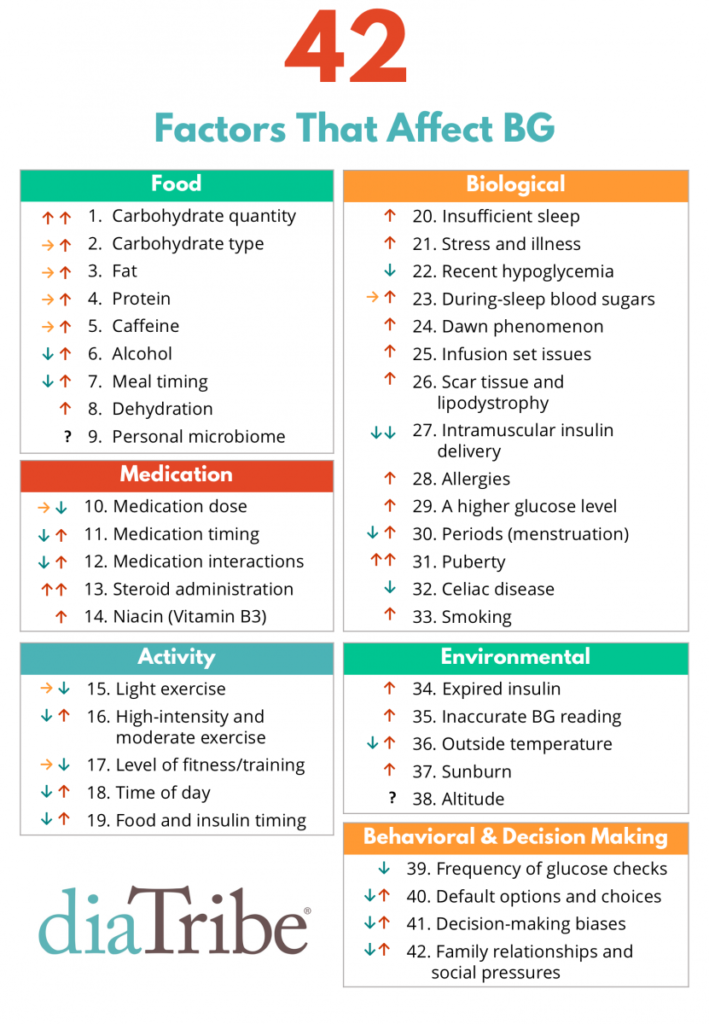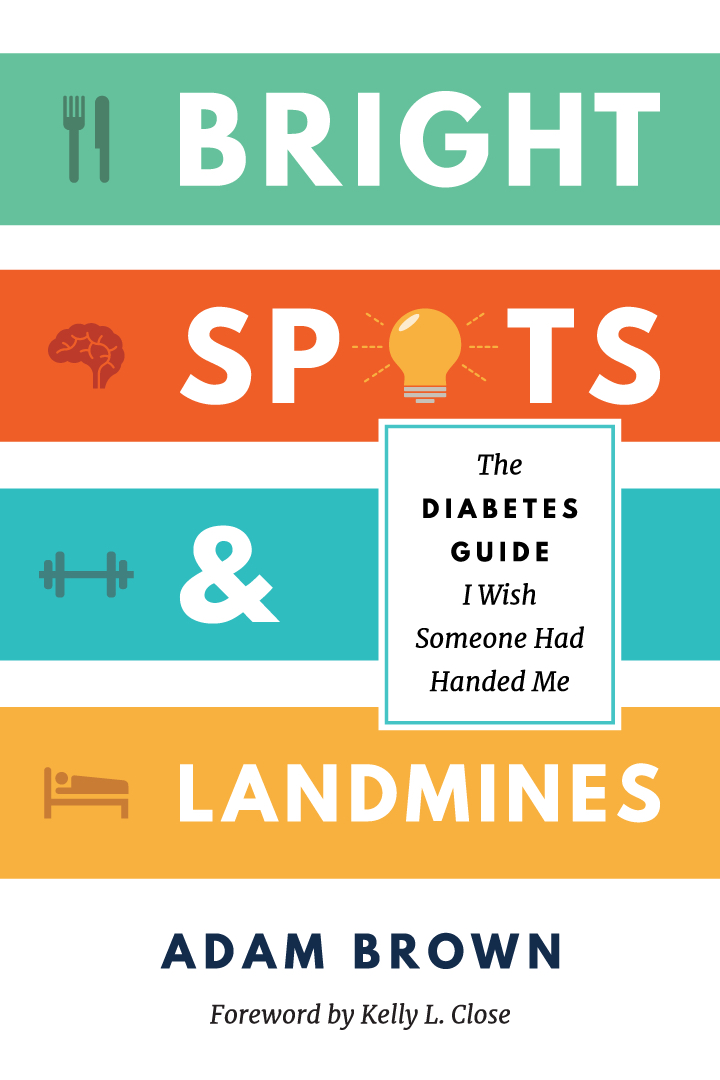Finding Bright Spots puts wind in the sails, rather than constantly tearing them down. -Adam Brown

Adam Brown is almost a household name in the diabetes community! He is the Senior Editor of diaTribe.org and author of acclaimed diaTribe column, Adam’s Corner as well as Head, Diabetes Technology + Connected Care, for Close Concerns. He’s the author of the incredible book, Bright Spots & Landmines: The Diabetes Guide I Wish Someone Had Handed Me,
His practical guide aligns with our thinking at A Fresh POV for You and our desire to educate the community about solutions focused therapy and coaching approach. We appreciate Adam taking time to share insights around finding and focusing more on what he calls diabetes “Bright Spots,” while setting up safeguards to steer away from stumbling upon diabetes “Landmines”.
Q1: What are “Bright Spots” and “Landmines”?
Adam: “Bright Spots” and “Landmines” is a framework for evaluating diabetes habits and decisions.
The goal with “Bright Spots” is to identify what works and focus on doing those things more often. In other words, “What’s going well in my diabetes that I should keep doing? What happens on my best days? What foods and decisions keep my blood glucose in the tight range of 70-140 mg/dL? What puts me in a positive frame of mind? How can I do more of these things each day?” Examples from my own life:
- Eat less than 30 grams of carbohydrates at one time.
- Remember why in-range blood sugars benefit me TODAY (I’m happier, more productive, in a better mood, and a kinder person to loved ones).
- Walk after I eat and to correct high blood sugars.
- Get at least seven hours of sleep.
Conversely, the point of Diabetes Landmines is to uncover what doesn’t work and find ways to do those things less often. “What decisions do I make repeatedly that explode into out-of-range blood sugars values over 180 mg/dl or less than 70 mg/dl? What happens on my most challenging days with diabetes? What choices do I always regret? What repeatedly brings on negative feelings? How can I do fewer of these things each day?” Examples from my own life:
- Hypoglycemia binge: overeating to correct a low, only to go high afterwards.
- Eating white bread, crackers, and sugary foods
- Asking unproductive questions like “How is this this possible?” or “Why am I so terrible at this?”
- Using all-or-nothing thinking: “Well, I don’t have an hour, so I can’t exercise.”
Clarifying Landmines upfront helps develop a plan of attack: What safeguards can I set up to avoid them? How can I build routines that reduce the chances of stumbling onto them?
Most of us are very good at identifying Diabetes Landmines (mistakes), but we rarely ask the opposite (Bright Spots) question: “What is working and how can I do more of it?” Diabetes requires both modes of thinking! And since Bright Spots are often overlooked and undervalued, we must actively cultivate this kind of thinking.
Q2: How does this framework fit into your book, Bright Spots & Landmines?
Adam: The book discusses my own “Bright Spots” and “Landmines” in four areas: Food, Mindset, Exercise, and Sleep. I consider these key pillars of living well with diabetes. My #1 goal was to make this book actionable, meaning anyone can pick it up and immediately improve some aspect of his or her life: more time in an ideal blood glucose range; less time managing and worrying about diabetes; less stress and guilt; better relationships and energy and sleep; and a happier mental state. Everything in Bright Spots & Landmines has made a positive difference in my life, and most things include a small step that can be taken immediately. The advice has resonated with people who are newly diagnosed all the way to those with 50+ years of diabetes.
Q3: How can people get Bright Spots & Landmines?
Adam:
1. Download a free PDF version at diaTribe.org/BrightSpots
2. Get it in paperback ($5.78) or on Kindle ($1.99)
3. Listen to it for free at diaTribe.org/BrightSpotsAudio or buy it on Audible or iTunes
Q4: The work we @AFreshPOVforYou are doing is centered around the solutions focused brief therapy approach. How does that align with Bright Spots?
Adam: It’s easy to come up with a vague list of things I “should” and “should not” do, but Bright Spots and Landmines need to be useful. That means hitting three criteria:
- Specific and actionable: “Eat healthy” does not count as a Food Bright Spot – it’s too vague. “Fill half my plate with vegetables” is much clearer.
- Realistic and sustainable: “Not eating” does not count as a Food Bright Spot either – it’s impossible to sustain. “Eat slowly and stop before I’m 100% full” is more realistic.
- In my control and changeable: “Bad weather” is not an Exercise Landmine – it’s out of my control. On the other hand, “overeating after exercise” is a Landmine that is changeable – I can find ways to avoid it.
Q5: Tell us about the 42 factors that affect blood glucose.
Adam: Over the past ten years, I have worn continuous glucose monitoring for over 60,000 hours, run thousands of personal experiments, and learned from some of the smartest minds in diabetes. One of my biggest takeaways is how absurdly complex diabetes is; it’s not as simple as “eat healthy, take your medications, and exercise and you’ll have on-target blood sugars.”
In reality, there are at least 42 factors that affect blood sugar – food, medication, activity, environmental, biological, and decision-making factors. Many of these factors are barely talked about (e.g., sleep), others are impossible to measure in any given moment (e.g., stress, infusion set function), and we never know what factors are in play in a given moment. Most of Bright Spots & Landmines is about minimizing the impact of those 42 factors. But perfectionism is impossible, given the tools we have and the environment we live in. CGM, coupled with experimentation and reflection, is an amazing diabetes tool to cope with this complexity. Get a full downloadable PDF explaining all 42 Factors here.

Q6: Would you share an impactful story/experience surrounding Bright Spots that might resonate with people living with either type 1 or type 2 diabetes?
Adam: The Amazon reviews tell some remarkable stories – people who have dropped their A1c by multiple points, who spend significantly more time-in-range each day, who have renewed motivation to manage diabetes, etc.
Q7: What guidance would you offer for DEs / HCPs to focus on bright spots?
Adam: When someone is struggling, the temptation is to focus on what’s going wrong and brainstorm solutions. This “Diabetes Landmines” thinking has value, but it cannot be 100% of the focus!
A “Bright Spots” orientation – what is working and how can I do more of it? – is just as valuable (and in many cases, far more valuable). Finding Bright Spots puts wind in the sails, rather than constantly tearing them down.
Here are some questions to help Find Diabetes Bright Spots:
- What is going well in my diabetes? What am I doing well that I should try to do more often?
- What happens on my best days with diabetes?
- What do I eat?
- What does my diabetes self-talk sound like?
- When and how do I exercise?
- How did I sleep the night before?
- What do loved ones do that is helpful?
- If I wanted to have one of these Bright Spot days today, what would I do to make it happen?
- What times of day or days of the week is my glucose consistently staying in range (70-140 mg/dl or 70-180 mg/dl, depending on your preferences)? What choices might be enabling that to happen?
- What is one Bright Spot decision from the past week that – if repeated consistently – would really improve my quality of my life?
- What are some small steps that I could take this week to increase my Diabetes Bright Spots? What am I willing to try?
Thank you Adam for your enlightening solutions focused approach and sharing your first-hand understanding and experience about how to live well with diabetes! We agree with you that “Bright Spots are often overlooked and undervalued, (and) we must actively cultivate this kind of thinking.” At A Fresh POV for you our goal is to do things differently and encourage building a strong therapeutic alliance by focusing on strengths, solutions, and yes, Bright Spots!
Subscribe to our blog and we’ll email you when a new post is published!
Follow us on Twitter and Instagram @AFreshPOVforYou.
Disclaimer: A Fresh POV for You is a participant in the Amazon Services LLC Associates Program, an affiliate advertising program designed to provide a means for sites to earn advertising fees by advertising and linking to amazon.com.
